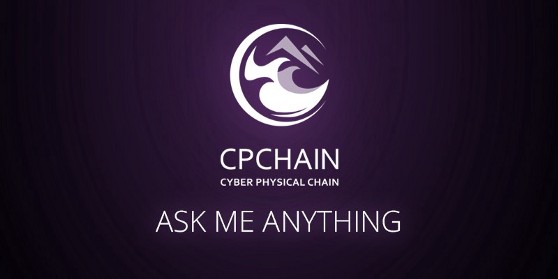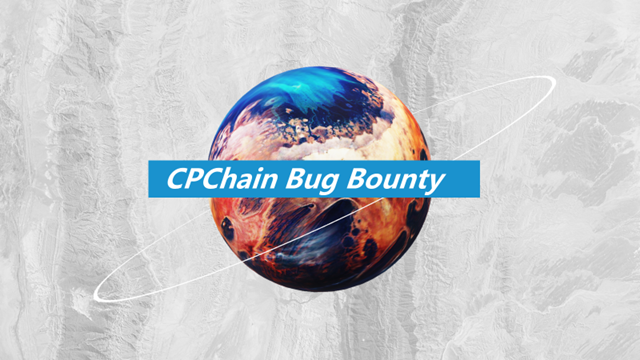CPChain AMA: Mainnet Version
by CPChain at Nov. 2, 2018

Q: Hi team, will the reward system be in CPC and “new token” or only in the new token? What will happen to the previous reserved mining rewards — will they be burned or go to the team?
A: The reward system will be in both CPC and CPCG. As its name suggests, CPCG is a gas used for transaction fee settlement and execution. The addition of CPCG has no direct impact on the previously defined 5-year reward pools; these will remain the same. We will give more detailed information on the CPCG reward plan at a later stage.
Q: As an investor, I would like to see that we keep the RNode ROI as promised and have additional CPCG rewards. Accordingly, please clarify the proposed rewards structure for the double token economy?
A: The reward structure for CPC will be the same as before, which means assessed by the DPoR system. In addition to the CPC reward there will also be a gas (CPCG) reward. The original reason for designing a double token economy was to better serve our ecosystem, to encourage transactions over the main chain and to secure CPC. Rewards will still concentrate on the value token, CPC. With the development of the ecosystem and data trading, CPCG will become more valuable.
Q: Could you tell us something about what happens after the mainnet is launched, i.e., when and how will it be used by clients/partners and how many clients are estimated will use it?
A: After the mainnet’s launch next March, clients/partners will be able to deploy their DApps on our mainchain, and use those DApps immediately. For example, PDash is one of our main DApps that helps individuals to upload their data and earn CPC, while organizations and/or individuals can purchase that data.
Estimating potential client numbers is hard to do precisely. However, since our partners agreed to share their databases with us, and more DApps are on their way, we prefer to keep doing what we are doing, and let time prove we were right.
Q: My question in focused on the incentives around the corner: the snapshot rewards starting this November.
Are holders still going to be paid with CPC or both CPC and CPCGas? With what ROI/pool? I also read in Telegram that these rewards would require registration to identify real people in order to be eligible. Is this a KYC?
A: Holders will be paid with CPC only this time. The ROI can actually be calculated after the application session ends. That is because we have a fixed pool of reward (5m CPC/365d) and the ROI will vary depending on the total amount of locked-up CPC. We do not need to verify personal identification during this stage, so it is not a KYC. However, some other information is required for registration, such as your residential zone, how long you have known us, etc. So it is more like a survey to help us “know our members and community contributors”, in a way.
Q: In case CPChain chooses to only distribute CPC Gas to RNode holders, what will happen to the value of CPC? How can this be avoided? My fear is that many investors will abandon CPChain if CPC loses even more value.
A: As the future rewards will be in both CPC and CPCG, your worries are unfounded. CPC will still be the dominant reward at the early stage. As gas, CPCG is used to pay for smart contract executed payments.
In regard to your concern, we believe the price of CPC will reflect the true value of our technology and research.
Q: Will we see mainnet usage when it is officially released in March 2019? Many platforms (like VeChain for example) have a running mainnet, but companies/partners are not using it (yet). It is the same for Icon and many others. Why have a mainnet if nobody uses it, in particular companies?
A: We promise that there will be DApp(s) running on the mainchain next year when we release it, namely, PDash. Application is a general issue faced by many public blockchains such as Bitcoin, Ethereum, NEO, etc. CPChain will invite our partners and followers to deploy DApps on our mainchain, and invite developers to create more fantastic apps. DApp is a long-term journey. CPChain is working towards a multi-billion IoT market, which includes medical, motor vehicles, insurance and so on. A big market means numerous opportunities and corresponding applications. CPChain focuses on the long-run, and the potential value of the whole ecosystem.
Q: What is the difference between Alpha mainnet (Dec 2018) and official mainnet (Mar 2019)?
A: Alpha mainnet will be the test version of mainnet, and we will open it for public to test and debug. Official mainnet will be the formal mainnet after an internal pressure test and public test. The mainnet is operable and will be qualified for the safety standard for people to use and deploy DApps on mainnet.
The Alpha version is an early version of the official mainnet. It is a fully-functional chain, but requires further effort to make it a perfect and bug-free version.
Q: Will the Mainnet launch reveal some corporate use cases? Can you say anything about the relationship to VeChain in terms of shared customers or business use cases? Or in general if there are potential shared applications with VeChain?
A: We are planning to reveal some corporate use cases perhaps even before the mainnet, so the answer is a big Yes. In regard to VeChain, they are good friends but there is nothing official going on right now. At the moment, we are putting our focus on the development of our mainchain and prioritising our work on several POCs with industrial companies rather than cooperation with other chains that require complex integration procedures on both sides.
Q: Can you please explain why you delayed your mainnet, even though you would have been able to deliver? I know you decided to release an improved version, but can you tell us how you came to this decision? Is it due to a cooperation/partnership? Or is it just that all of a sudden during your research you found a way to improve it?
A: As we have stated in our previous announcement: “during the development of the mainnet, the CPChain team discovered additional fields of technological innovation which would greatly improve our network’s long-term infrastructure and increase the number of potential use cases for CPChain”. We decided to focus on maximizing the potential of CPChain through the development and implementation of additional functionality. The delay is not due to partnership/cooperation; we have a separate team working on those.
Q: Can you tell us more about your POCs? Even if you cannot mention names, can you just give us the slightest hint please?
A: Sure, we would love to share some information about one of the POCs that we are currently working on, although due to the NDA we cannot disclose detailed information. This POC is with a world class motor vehicle brand; the theme is M2M transactions and traceability based on blockchain and IoT technology.
Q: What do you think about the price development? How important is liquidity and the price itself to you, and in case both are important, what are you doing to ensure the positive development of both?
A: First of all, blockchain is way more than coins. From a strategy perspective, price is not the main focus of CPChain. Instead, technology and future applications are the core. Of course, we care about the price and market, as price represents the interest of our investors and ourselves. That is why we started our buyback program this August when the market value of CPC dropped below its face value. Buyback continues to go well, and we will disclose more details in our upcoming financial reports.
Q: How do you see your project in comparison to IOTA and Iotex. Where do you see advantages, and where do you see catch-up demand?
A: Blockchain, as the basis of constructing a decentralized trust system, aims to solve three main issues in the current IoT industry, being scalability, efficiency and security. The combination of blockchain and IoT is a future trend. Hence, blockchain + IoT is a blue sea. There are IOTA, INT, VeChain, IoTeX and some other players in the market. Rather than calling them our competitors, we would prefer to say they are our potential partners in improving the IoT industry together.
The key technology of IOTA is to use DAG data structure to realize the concurrent confirmation of transactions, which solves the bottleneck problem for current blockchain technology in supporting high frequency, micro-transactions in IoT.
Moreover, most blockchain technologies in IOT currently only focus on certain industry applications. With CPChain, we focus on promoting the value of data sharing in IoT. To fulfill the goal, CPChain put forward the distributed architecture system: Mainchain — industry chain — distributed cloud storage.
CPChain is developing the underlying technology of blockchain to support distributed acquisition, storage and sharing of large-scale IoT data, to provide real, legal and compliant data for application providers, and to create value through distributed intelligent analysis. Meanwhile, the ownership and interest of the data providers are guaranteed. The data sharing will be safer and date flow will be more effective. In the long run, we would like to build a distributed Internet of trusted things business platform through data accumulation from physical systems.
Q: Where should we store our tokens to get the rewards?
A: For the Pre-Mainnet Reward Program (Season 1), which will be started later this month, you can simply keep your tokens in your own wallet.
After the official mainnet is launched next year, tokens need to be locked up in our own wallet through smart contract.
Q: Did you consider using the VeChain Thor token $VTHO instead of creating your own gas token CPCG? VeChain has invested in CPC so there must be something going on…
A: It would be quite impractical to run the system. The settlement gap between two completely different systems makes this idea unfavorable. We believe our own token serves our ecosystem best.





